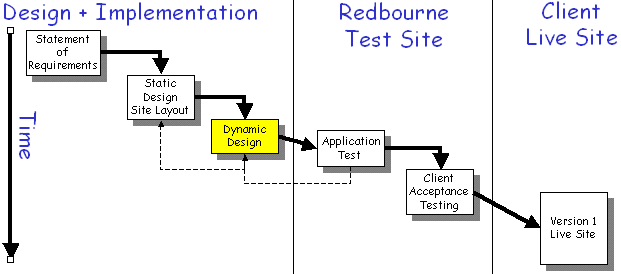Approach to Developing a Redbourne Application
Developing a Redbourne Application Dynamic or Active DesignThe basic application look and feel has now been determined, as have the pages that need to be produced. Now it is necessary top translate the design and the demonstration pages into a real web application. The following things should be considered when developing the application: Common Look and FeelThe static design agreed a basic look and feel for the site, and probably agreed a single style to be applied to most, if not all pages within the site. When considering the site implementation investigate whether some or all of this look and feel can be encapsulated in a single file - to be included at the top of each page in the application. This has the following advantages:
The Redbourne system incorporates some very powerful mechanisms (using include
files and XML processing) that make it very easy to produce a "wrapping"
for main page content. The page that you are currently looking at is designed
as an HTML document with no left hand or top border, just a plain page the only
addition being a single Feature Mapping/DesignDecide how the features required by the application are going to be mapped to the services offered by the Redbourne system. Obviously you will have some idea of this in-order to agree the specification of the application. This is now the addition of detail - and may require you to revisit the static as well. Data Storage/Session DataMost web applications need to store some context sensitive information. Part of the dynamic design is to decide where and how that information will be stored. Some of the options are:
For a discussion of these options see the 'Tracking User Sessions' technical note. |

